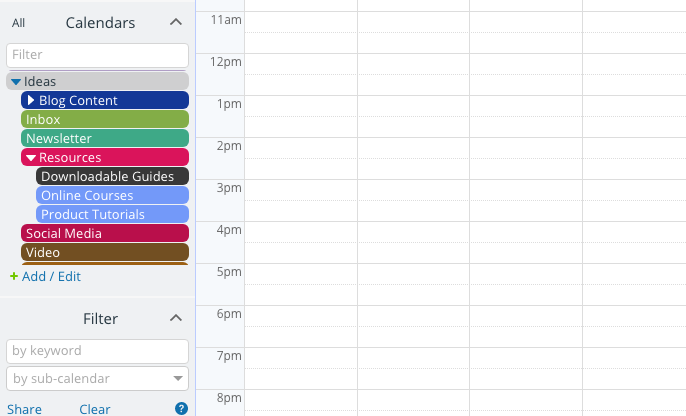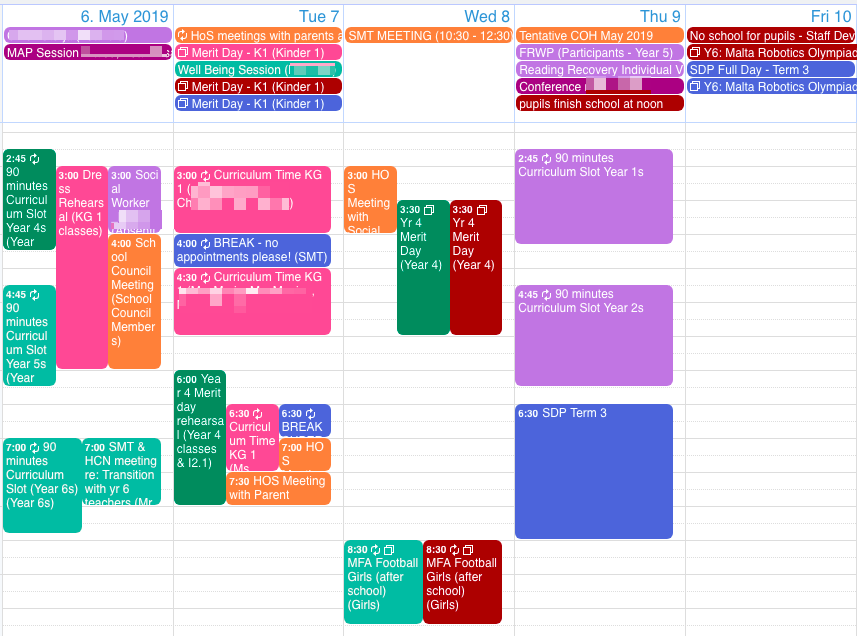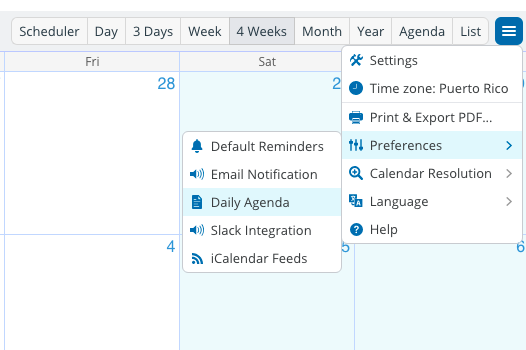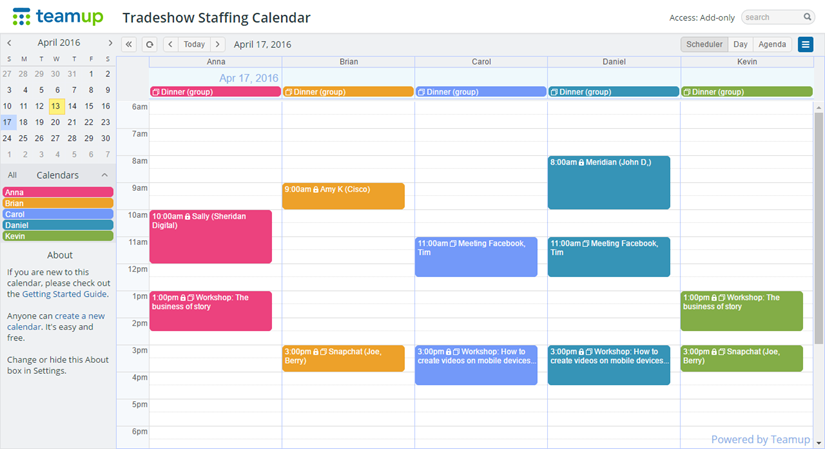Last updated Sep 20, 2022
Spreadsheets are often the standard tool for organizational time-based planning needs. But they’re often not the best fit—in fact, spreadsheet planning can be unnecessarily complicated, unreliable, and frustrating. A feature-rich, flexible calendar can be a great spreadsheet alternative.
Here are 5 common spreadsheet planning uses that don’t have to take place on a spreadsheet. What to use instead? Well, how about a great calendar? We’ll highlight some of our favorite Teamup features for each use below. We’d love to help you turn frustrating spreadsheet management into efficient and enjoyable calendar-based planning.
1. Content calendar
Content marketing is relevant for practically every business these days. Managing a content calendar has become part of many job descriptions. Whether you’re an editor, a business owner, or a freelancer, managing a content calendar on a spreadsheet isn’t the only option. An actual calendar turns out to be a great spreadsheet alternative.
Relevant information:
- content ideas
- resources, research, and assets (files, links)
- contributor information
- assignments
- progress and deadlines
- related content
How to use Teamup as a content calendar

- Create sub-calendars for each contributor, each content type, and/or each publication or property involved.
- Grant calendar access to contributors, setting access to the sub-calendars they can see and the permissions they have.
- Use Yearly view for a big-picture planning view; drill down to manage single assignments for each quarter, month, and week.
- Upload relevant files and keep content descriptions, links, and notes right in the content calendar.
Pro tip: use recurring events to ensure that content promotion and repurposing doesn’t go undone.
2. Lesson plans and school schedule
Teachers do so much work outside the classroom. Lesson planning is a big part of that work. And while endless spreadsheets can track endless lesson ideas, they can also cause endless annoyance. A searchable, sortable, and color-coded calendar makes lesson planning and school scheduling easier. You can help your students be more autonomous, keep parents updated, manage classroom resources, and encourage student organization with Teamup as a spreadsheet alternative.
Relevant information:
- books and multimedia resources
- websites and research sources
- homework assignments
- learning standards
- notes and points to cover
- related material
How to use Teamup as a lesson planner and school scheduler

- Add key points, topics, standards, and milestones to a dedicated sub-calendar to keep track of what needs to be covered, when.
- Use color-coded sub-calendars to plan and track student needs, activities, homework, reading assignments, classroom schedules, and more.
- Keep thorough notes (with links and file uploads) right in the calendar; teach from the calendar or print a hard copy as needed.
- Enable notifications so students and parents can easily stay informed.
Pro tip: use stand-alone event pages as a way to share lesson material, homework, or extra credit assignments with students and parents.
3. Goal and quota planning
Your sales team has quotas to meet. Your dev team wants to complete so many sprints per quarter. Your financial team needs everything to stay on budget. Managing a team or running an entire business can mean juggling many goals and quotas. Spreadsheet plans provide room for lots of details, but make it difficult to see a combined big-picture view.
Relevant information:
- budgets for various timelines
- quotas (sales, customers, calls, items, etc.)
- sprints and timelines
- customer information
- product information
How to use Teamup as a goal and quota planner

- Create sub-calendars and organize them in folders to focus on one team or business area at a time.
- Provide customized calendar access to supervisors and team members—the Sales team can access only Sales sub-calendars, for example.
- Toggle sub-calendars on and off to get a big-picture view of all the goals, quotas, and day-to-day activities or to focus on one goal at a time.
- Use the daily agenda or other notifications to keep everyone updated and on task with progress toward their goals.
Pro tip: use a customized multi-week calendar view to set up sprints or timelines that work for your team.
4. Project management
Managing a project involves a lot of information and may mean multiple people and varying timelines. Plus, in project management, things can change quickly. It’s important to be able to collaborate with the rest of your team, and to be able to trust your data and schedule. Spreadsheet planning can be unreliable and create version conflicts. Calendar-based project management is an alternative that makes collaboration easy while also protecting your project data.
Relevant information:
- project scope and details
- contractor information
- schedules (events, individuals) and availability
- resources, assets, and reference materials
- inspiration
- quality standards
How to use Teamup to manage projects

- Use the calendar as a catch-all for every bit of project information: notes, timelines, files, images, and more.
- Grant limited calendar access to contractors and clients so they can see only the sub-calendars you want them to see.
- Drag and drop events as needed when things change.
- Use custom event fields to track the status of any task or project details.
Pro tip: Use sub-calendars organized in folders for a degree of granular organization that allows you to get every detail right without losing the big picture.
5. Event management
Event management is such a hands-on process. While you can have the perfect plan (and the perfect spreadsheet), you can’t predict what’s going to happen at the actual event. The easier it is to communicate—both with your team, and with event participants—the better. This is where spreadsheets fall short. Shuffling information around when planning the event is a pain. Doing the same when the event is happening becomes impossible.
Relevant information:
- location details, blueprints, and maps
- shift schedules for event workers
- food and entertainment info
- guest/participant information
- VIP status and needs
- feedback
How to use Teamup to manage events

- Organize different aspects of the event in sub-calendars and folders to focus on one thing at a time without losing the overview.
- Use Scheduler view to compare hour-by-hour timelines of who needs to be doing what for every part of the event.
- Share event pages with guests and participants—any changes you make to the calendar event is automatically reflected in the event page.
- Keep everyone on track during the event with Teamup’s mobile apps for iOS and Android.
Pro tip: upload all relevant files—from seating charts to guest lists, VIP profiles, and more—to the calendar so your whole team can access the information as needed.
Ready to try it? Check out a demo calendar, or create your own calendar now.

